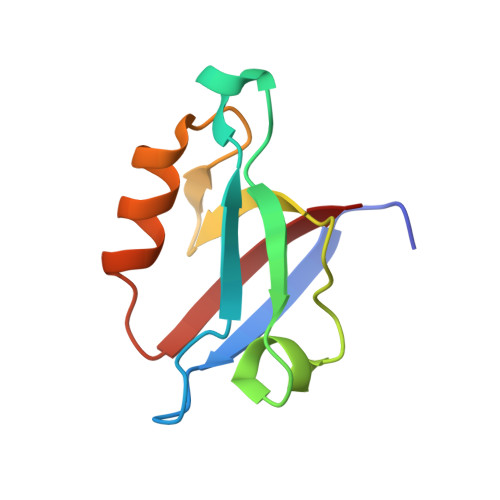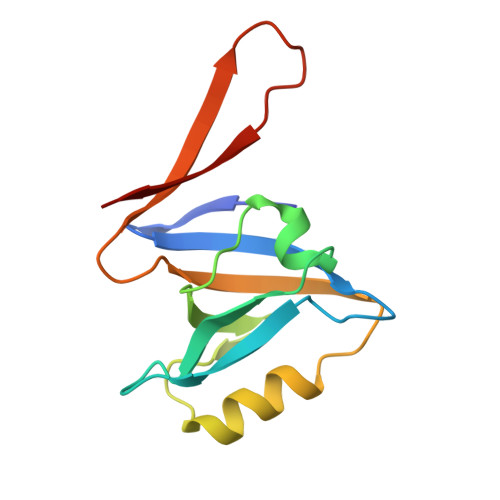Quantification of the transferability of a designed protein specificity switch reveals extensive epistasis in molecular recognition.
Melero, C., Ollikainen, N., Harwood, I., Karpiak, J., Kortemme, T.(2014) Proc Natl Acad Sci U S A 111: 15426-15431
- PubMed: 25313039
- DOI: https://doi.org/10.1073/pnas.1410624111
- Primary Citation of Related Structures:
4HOP - PubMed Abstract:
Reengineering protein-protein recognition is an important route to dissecting and controlling complex interaction networks. Experimental approaches have used the strategy of "second-site suppressors," where a functional interaction is inferred between two proteins if a mutation in one protein can be compensated by a mutation in the second. Mimicking this strategy, computational design has been applied successfully to change protein recognition specificity by predicting such sets of compensatory mutations in protein-protein interfaces. To extend this approach, it would be advantageous to be able to "transplant" existing engineered and experimentally validated specificity changes to other homologous protein-protein complexes. Here, we test this strategy by designing a pair of mutations that modulates peptide recognition specificity in the Syntrophin PDZ domain, confirming the designed interaction biochemically and structurally, and then transplanting the mutations into the context of five related PDZ domain-peptide complexes. We find a wide range of energetic effects of identical mutations in structurally similar positions, revealing a dramatic context dependence (epistasis) of designed mutations in homologous protein-protein interactions. To better understand the structural basis of this context dependence, we apply a structure-based computational model that recapitulates these energetic effects and we use this model to make and validate forward predictions. Although the context dependence of these mutations is captured by computational predictions, our results both highlight the considerable difficulties in designing protein-protein interactions and provide challenging benchmark cases for the development of improved protein modeling and design methods that accurately account for the context.
- Department of Bioengineering and Therapeutic Sciences.
Organizational Affiliation:

















